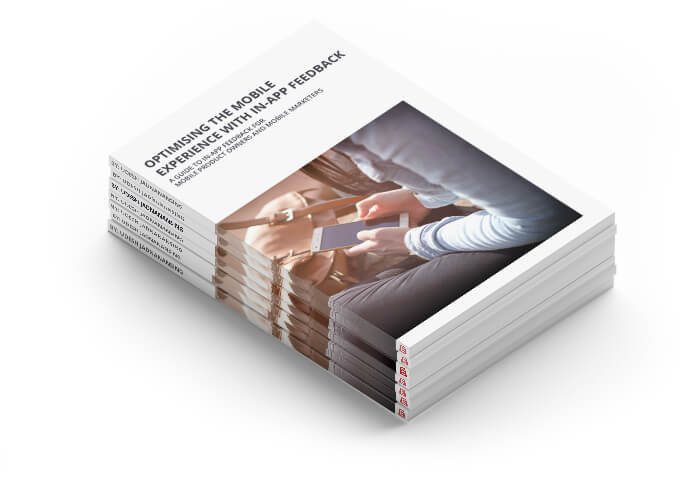As the world moves from desktop to mobile, apps are becoming our new shopping malls. Just as we walk into a mall or a store, look around the merchandise, pay, and leave with a bag, now we launch an app and shop to our heart’s content, without having to leave the comfort of our chair. Best of all, we can do it anywhere – we can now do our grocery shopping on our morning commute, shop for friends’ birthdays on our lunch break, and send Mom flowers without ever having to make a single call.
However, as we all know, not all malls are created equal: some of them are fabulous, well-lit, entertaining shopping utopias, and some are dark, dank, unnavigable nightmares. Apps are no different. In fact, they face another, bigger problem: since anyone can download any mCommerce app, the competition is much, much steeper. To rise above the competition, your app needs to be absolutely perfect, providing your user with a smooth, seamless journey through your virtual store.

Specifically, there are three key steps in a user’s journey which can easily determine whether your user stays and shops, or abandons your mCommerce app altogether. Here’s how you can guarantee that these steps are flawless and increase your overall CR.
Welcome your customers with smooth onboarding
When you enter a store or a mall, your first impression can tell you a lot. You can see right away if the merchandise is organized or messy, if the shelves are easy to navigate, and if the salesperson is helpful, pushy, or even absent. If any of these aspects are less than satisfactory, you’ll probably leave within a minute. mCommerce apps are no different than those stores of yore: the minute your users launch your app, you have a precious few seconds to impress them. 80% of an app’s active users abandon it within the first three days after installing it. Will your app greet users with a smile or make them run for the hills?

To make sure it’s the former and not the latter, there are a few onboarding best practices you should bear in mind.
- Make signing up a breeze. Many users hate the sign-up screen and try to avoid it – qualitative analytics will show user upon user trying to frantically swipe their way out of signing up. They hope to try out the app without making a commitment to the brand – a commitment that requires one more click, one more confirmation step, one more password to remember, and even a slew of spam. When designing your sign-up/login screen, make it only as long as absolutely necessary to start using the app, and if at all possible consider adding an option to try the app without signing up.
- Keep it short and sweet. If your onboarding needs more than one screen, try to keep the screens to a minimum, and let your users know how where they are by showing a small progress bar. Screens should be so fast and easy to read that even the most impatient user won’t give up on you halfway through.
- Show your cards. If your users don’t know what to expect from your app, you’ll have to wow them quickly before they get bored. If your app has a killer feature or two that really push it up there with the category leaders, make sure you show that off as soon as possible. You’ve got it, so flaunt it!

Free White Paper: Optimising the Mobile Experience with In-App Feedback
A guide to in-app feedback for mobile product owners
and mobile marketers.
How can you be sure that you’re getting all of these right, and not making any onboarding mistakes? Qualitative app analytics are your friend here. The best analytics method for ensuring an excellent onboarding experience is qualitative analytics, which buffs up your quantitative data with user session recordings and touch heatmaps. Touch heatmaps aggregate the areas on your screen that users tap and swipe the most. For example, you’ll be able to see if users are trying to override your sign-up screen by swiping repeatedly on the bottom of the screen. With qualitative analytics, you can see every gesture your users make on those important first few screens.

Enable a fast and easy search experience
When you walk into a store, you can usually rely on a salesperson to greet you and help you find whatever you’re looking for. For mCommerce users, this is usually the search function. Chatbots, while useful, are not always to be found in an app, and asking for help via social media, phone, or email would never be a user’s first choice. Users turn to the search to find what they need quickly and easily, and that’s why the search function needs extra attention. You can also learn a lot about your users by analyzing the way they interact with your search function.

To create a truly great search UX, you’ll want to prioritize efficiency and accuracy. Now, while minimalism is often a good practice for mobile apps and their small screens, there are ways to create a more detailed, feature-rich search function without making extra work for the user – as long as it still looks neat and easy to navigate. Users who hit the search bar are often in a hurry to find what they need fast, and keeping them waiting is a bad idea. This can be resolved with smart auto-fill and suggestions via search history. Always bear in mind the principle of least effort: search functions should leave no room for error, as every unnecessary tap causes the user frustration and makes it seem like you just don’t stock the item they need.
To get a close inside look at how users are enjoying your search function, user session recordings are a good way to observe each search. Add to this an analysis of action cohorts and conversion funnels and you a have a whole suite of tools at your disposal. With these, you will know what steps users take before and after they perform a search – important knowledge you need in order to see how users’ searches lead to desired events and conversions. With a user session replay tool, you can also see what terms users search for, enabling you to learn what they expect to find in your app.
Don’t scare away customers at the checkout counter
At last, we come to the trickiest and most important stage in your user’s journey: paying up. To encourage them to complete the purchase funnel, there is one golden goal that needs to be reached, and that is trust. Any glitch in your payment screens can spook or frustrate your user into immediately quitting their purchase process and potentially deleting the app, never to return. However, with a bit of empathy and a lot of monitoring for bugs, creating a trustworthy payment process can be less intimidating than it sounds.

Mobile apps for e-commerce may be growing in popularity, but mobile conversion rates still remain lower than desktop. According to these data on mobile marketing from Smartinsights, in Q4 of 2017, conversion rates on smartphones stood at 2.03%, compared to 4.68% on desktop. Every slow-loading screen, every sudden pop-up notification, and every less-than-obvious button can make them too nervous or annoyed to complete the transaction, suspecting bugs, viruses, and identity theft. You want to create a safe, streamlined experience that will put the most frightened or impatient user right at ease.
Two different tools can help you keep an eye on your payment screens and how well they’re working: crash analytics and conversion funnel analytics. Crash and bug analytics that include session recordings can provide you with the insights you need to chase down and squash bugs, crashes, ANRs, and other performance issues. If you also set alerts for tracking these issues, it can ensure that you’re the first to know when they occur.
In addition, with an analysis of your app’s conversion funnels, you can find out at what stage users drop out of the funnel. Then, by consulting session recording and breakdowns, you can investigate these drop-outs further and find out what’s keeping your users away.
Summing up
mCommerce is eCommerce leveled up: it’s the next leap in the shopping experience evolution and is already showing signs of becoming the strongest species. In the last quarter of 2017, mobile apps were the most popular eCommerce channel, and if a brand has a mobile app, chances are it will bring in more sales than the desktop version. The dark side of this is that mCommerce app design and development teams are faced with greater competition than ever, and need to maintain a user journey that turns first-time users into returning and loyal users. Luckily, the right mobile analytics tool can help app professionals keep up with all their KPIs – usability problems such as unresponsive gestures, crashes and ANRs, and retention potholes such as imperfect onboarding and payment screens. If you need to reference a quick and painless cheat sheet of mCommerce app KPIs, you can click here.
About the Author
Laura Levy is an Inbound Marketing Manager at Appsee. She’s a committed app junkie, loves following new trends in UX design and enjoys talking about her newest favorite app and what makes it work. When she’s not browsing through the App Store, she spends hours looking up new recipes on Pinterest, and sometimes even making them.







